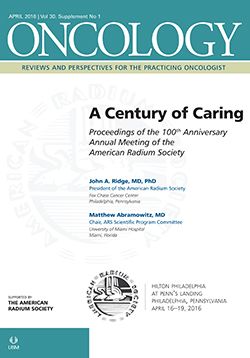(P020) Adjuvant Chemoradiation Is Associated With Improved Overall Survival in Patients With Stage III Endometrial Cancer: An Analysis of the National Cancer Data Base
In this large population-based cohort, adjuvant chemoradiotherapy is associated with improved OS in patients with stage III endometrial cancer.
Charles C. Vu, MD, Karna Sura, MD, Maha S. Jawad, MD, Sirisha R. Nandalur, MD; Beaumont Health System
OBJECTIVE: To compare various adjuvant treatment strategies in patients with stage III endometrial cancer.
METHODS: The National Cancer Data Base (NCDB) is a joint project of the Commission on Cancer of the American College of Surgeons and the American Cancer Society. The NCDB was used to analyze a cohort of women with pathologic stage III endometrial cancer. All patients were staged with hysterectomy, bilateral salpingo-oophorectomy, and pelvic lymph node dissection. All patients who were treated with chemotherapy received multiagent chemotherapy. Statistical analysis was performed using Kaplan-Meier curves, log-rank tests, and multivariate Cox proportional hazards regression. Demographic, tumor, treatment, and comorbidity covariates were included in the multivariate model.
RESULTS: A total of 12,501 patients with stage III endometrial cancer were included in this analysis; 2,439 (20%) patients received adjuvant chemoradiation, 1,280 (11%) received adjuvant radiotherapy (RT) alone, 5,132 (41%) received adjuvant chemotherapy alone, and 3,650 (29%) received no adjuvant therapy. The median follow-up time was 36 months (interquartile range: 19–62 mo). Estimated unadjusted 5-year overall survival (OS) was 70.9% for chemoradiation, 60.9% for radiotherapy alone, 56.5% for chemotherapy alone, and 50.8% for no adjuvant treatment (P < .001 using log-rank test). After accounting for demographic, tumor, and comorbidity covariates, treatment with chemoradiation remained predictive of improved OS in the final multivariate model. Tumor characteristics that were predictive of poorer survival on multivariate analysis included larger tumor size, higher grade, increased number of positive lymph nodes, and presence of lymphovascular space invasion.
CONCLUSION: In this large population-based cohort, adjuvant chemoradiotherapy is associated with improved OS in patients with stage III endometrial cancer. Strong consideration of adjuvant combined-modality therapy should be given for patients with stage III endometrial cancer, pending publication of data from randomized trials (eg, the Gynecologic Oncology Group trial GOG 258, and PORTEC-3).
Proceedings of the 98th Annual Meeting of the American Radium Society - americanradiumsociety.org
